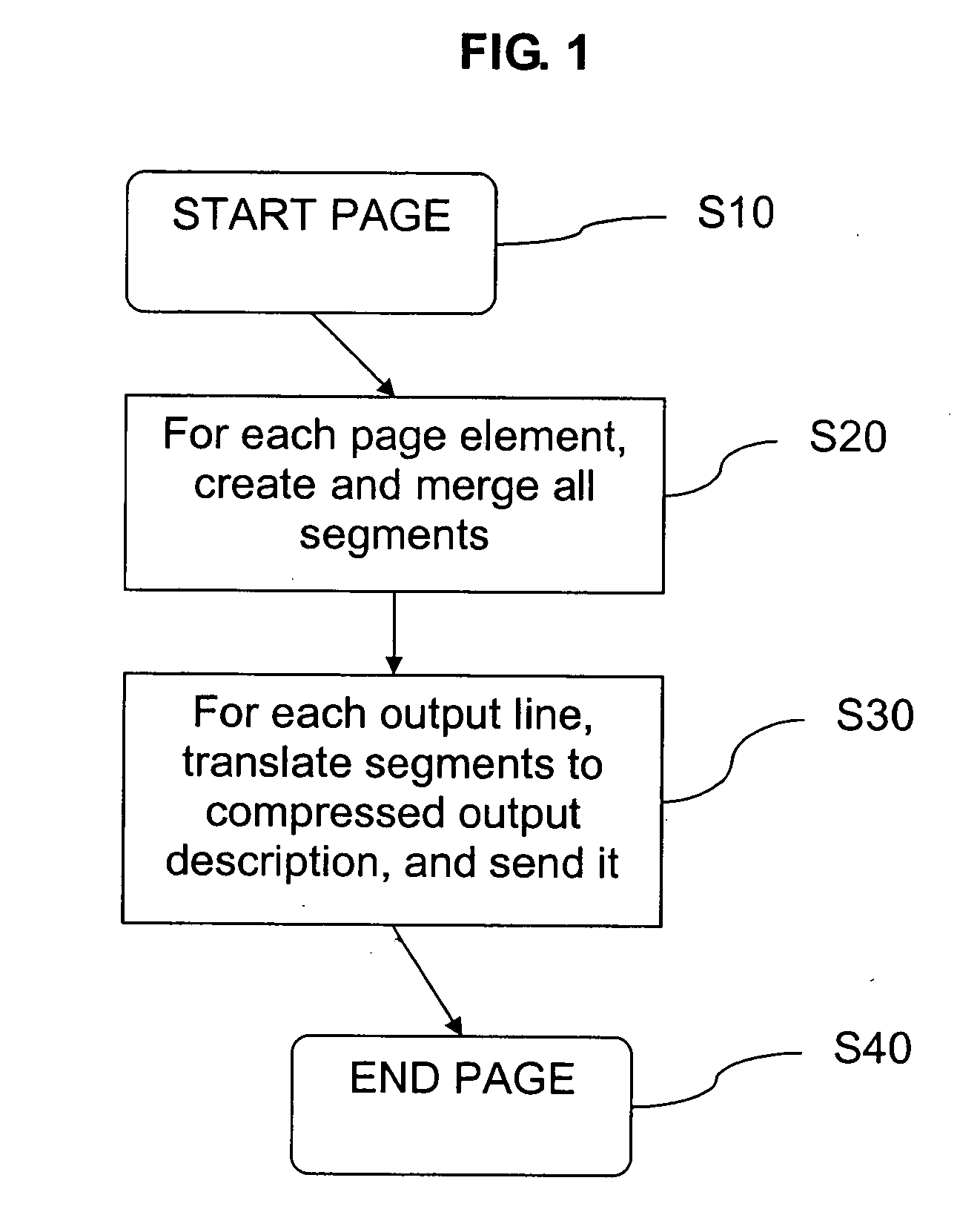Digital image processing with inherent compression
a digital image and compression technology, applied in the field of digital image processing with inherent compression, can solve the problems of inability to erase ink or toner deposited on paper, cost of cpu time, and complex green rectangle partially obscured by a red circle, so as to achieve greater speed, improve performance, and reduce the effect of resources consumed
- Summary
- Abstract
- Description
- Claims
- Application Information
AI Technical Summary
Benefits of technology
Problems solved by technology
Method used
Image
Examples
Embodiment Construction
[0084] Certain embodiments of this invention flatten incoming page elements while largely retaining their inherent compression. The following table explains the concept of inherent compression for each page element class.
PageElementClassSpecificationInherent CompressionExampleTextSpecified as anUnique characters per“This is a test” has 7array of [(x, y)font / size are stored run-unique letters (“T”, “h”,position, glyphlength compressed in a“i”, “s”, “a”, “t”, “e”), withID]document glyph cache.each glyph run-lengthcompressed (18 pt yields3:1 or better).GraphicsSpecified asThe array of verticesA rectangle with corners atobject typeconsumes just 2 integers(100, 100) and (500, 500) is(rectangle, line,per vertex (8 bytes eachspecified with just twopolygon, etc.)on a 32-bit CPU)vertices, compared to awith two or moreraster area of 400 × 400 = 160,000(x, y) vertices.pixels.ImagesSpecified as aFor printing, typically theA 3″× 4″ photo from a websource image, andsource image is lower-page ar...
PUM
 Login to View More
Login to View More Abstract
Description
Claims
Application Information
 Login to View More
Login to View More - R&D
- Intellectual Property
- Life Sciences
- Materials
- Tech Scout
- Unparalleled Data Quality
- Higher Quality Content
- 60% Fewer Hallucinations
Browse by: Latest US Patents, China's latest patents, Technical Efficacy Thesaurus, Application Domain, Technology Topic, Popular Technical Reports.
© 2025 PatSnap. All rights reserved.Legal|Privacy policy|Modern Slavery Act Transparency Statement|Sitemap|About US| Contact US: help@patsnap.com



